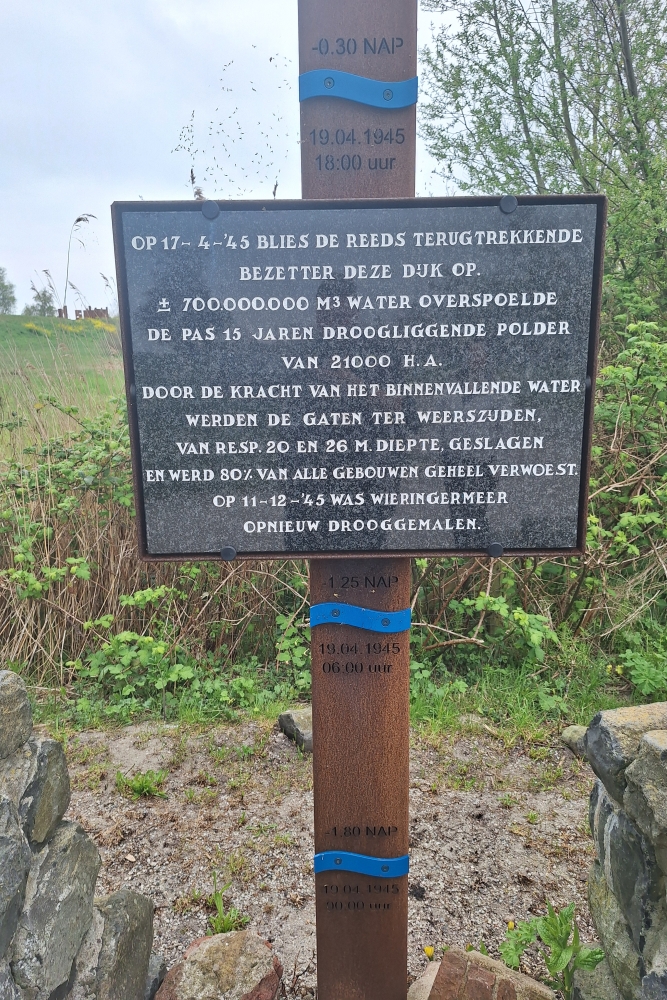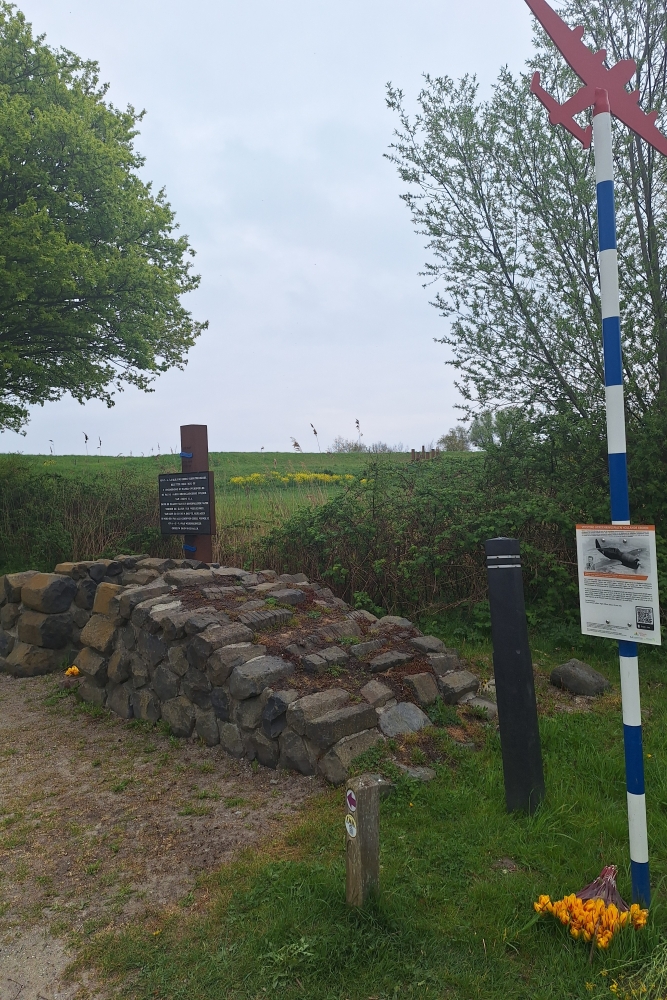Blown-up Dyke at Wieringerwerf
On 17 April 1945, during the final weeks of World War II, a dike breach occurred in the Wieringermeer near Wieringerwerf, North Holland. However, this disaster was not a natural disaster, but a deliberate act by the retreating German occupiers.
What happened?
German troops blew up the dike of the Wieringermeerpolder, causing water from the IJsselmeer to flood the polder. Within hours, most of the polder was under water. The dike breach had enormous consequences:
Thousands of people had to leave their homes in a hurry.
Farms and houses were severely damaged or completely destroyed.
The polder, which had been reclaimed in 1930, became an inland sea once again.
Much agricultural land was lost and it took years to recover.
Why did it happen?
The Germans wanted to delay the liberation of the Netherlands by destroying infrastructure and strategic areas. By flooding the polder, they hoped to hinder the Allied advance. For the residents, this action came as a bolt from the blue.
The aftermath
After the war, the Wieringermeer was drained as quickly as possible – this was achieved in July 1945. Thanks to hard work and help from various organisations, the area was rebuilt. Since then, the breach has been an important reminder of the destructive power of war, even at the very last moment.
Do you have more information about this location? Inform us!
Source
- Text: RJArmy.nl
- Photos: RJ Army
Nearby
Point of interest
- Memorial Hole in the Dike Wieringerwerf - Wieringerwerf
- Craters Dike Wieringermeer - Wieringermeer
- Refugee Camp "Oude Zeug" - Wieringerwerf
Monument
- Dike Restoration monument - Wieringerwerf
- Memorial Destruction Dike Wieringermeer - Wieringermeer
- War Memorial Wieringerwerf - Wieringerwerf
Cemetery
- Dutch War Grave General Cemetery Middenmeer - Middenmeer (Wieringermeer)
- Commonwealth War Graves General Cemetery Middenmeer - Middenmeer (Wieringermeer)
Fortification
- Stelling Den Oever - Work Xll - Den Oever
- Stelling Den Oever - Heavy MG Casemate Werk X - Den Oever
- Auxiliary Bandage Bunker XIII - Den Oever






